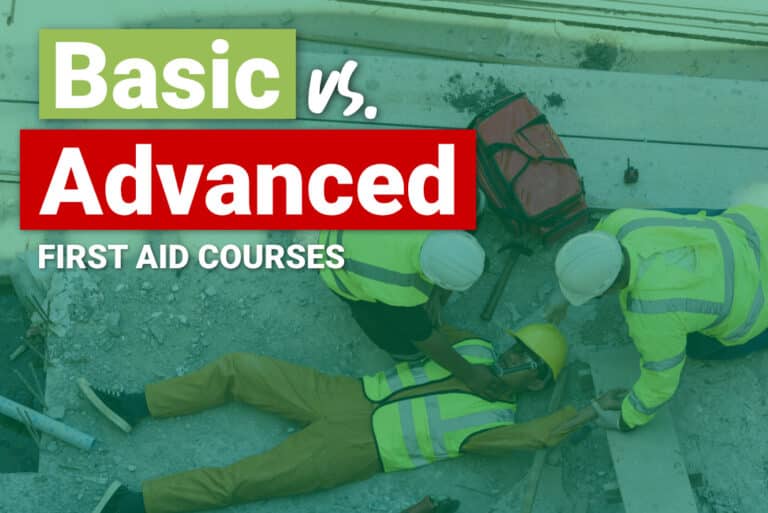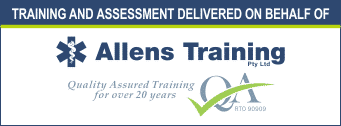Hypothermia is a health condition that occurs when a person’s body temperature drops too low. First aid training can prepare you to help if someone becomes hypothermic, ensuring you know what to do to keep them safe. But, if you haven’t done a course yet, lets learn what you need to know.
Hypothermia is a serious condition that occurs when your body temperature drops below 35°C (95°F). Our normal body temperature is 37°C. As the body gets cold, it starts to lose heat faster than it can produce it, leading to various symptoms.

Common signs of hypothermia include shivering, slurred speech, slow and shallow breathing, weak pulse, lack of coordination, confusion, drowsiness, and in severe cases, unconsciousness. These symptoms occur because the body’s natural responses to cold, like shivering and constriction of blood vessels which aim to preserve heat and maintain core temperature, no longer work effectively. As hypothermia progresses, the body’s ability to generate heat diminishes, potentially affecting brain function and muscle control.
Knowing how to recognise and manage hypothermia can make a significant difference in an emergency. In this blog, we’ll explore three common scenarios where hypothermia can occur and how to handle each one.
Table of Contents
Scenario 1: Winter Hike Gone Wrong

Imagine you’re on a beautiful winter hike with friends in the mountains. The weather takes a sudden turn for the worse, and you find yourself in a snowstorm. One of your friends, who didn’t dress warmly enough, starts to shiver uncontrollably, feels tired, and begins mumbling incoherently. These are early signs of hypothermia.
What to Do:
- Move to a Shelter: Find a sheltered spot out of the wind and snow. This could be a tent, a cave, or even behind a large rock.
- Remove Wet Clothing: Wet clothes draw heat away from the body. Replace them with dry, warm layers if possible.
- Warm the Person Gradually: Use blankets, sleeping bags, or even your own body heat to warm your friend. Avoid direct heat sources like hot water bottles or campfires, as these can cause burns or shock the body.
- Provide Warm Drinks: If they’re conscious and able to swallow, give them warm, non-alcoholic drinks. Avoid caffeine as it can increase heat loss.
- Seek Professional Help: Call for emergency services. Even if your friend seems to be recovering, hypothermia can cause complications that need medical attention.
Scenario 2: Elderly Person at Home
Hypothermia isn’t just an outdoor risk. Imagine an elderly neighbour living alone in an underheated home. You visit them on a chilly day and notice they’re confused, have cold skin, and are shivering slightly.

What to Do:
- Warm the Environment: Turn up the heating, if possible. Use space heaters safely, ensuring there’s no risk of fire.
- Provide Warm Clothing and Blankets: Layering is key. Offer them warm clothes, socks, and blankets.
- Warm Food and Drinks: Encourage them to drink warm, non-alcoholic beverages and eat warm foods like soup. This helps raise their body temperature from the inside.
- Check for Underlying Issues: Ensure there are no open windows or draughts. Sometimes, hypothermia can be due to an underlying health issue, so consider contacting their healthcare provider.
- Stay with Them: Stay until they’re feeling better or someone else can take over. Hypothermia can be slow to develop, so it’s important to ensure they’re fully warmed up.
Scenario 3: Child in Cold Water
Children are particularly vulnerable to hypothermia, especially if they’ve been playing in cold water. Picture a child who has fallen into a cold lake. They’re pulled out, but they’re shivering violently and their lips are blue.

What to Do:
- Get Them Out of the Cold: Immediately move the child to a warmer environment. If indoors isn’t an option, a car with the heater on can work.
- Remove Wet Clothes: Wet clothes need to be replaced with dry ones as soon as possible to stop further heat loss.
- Warm Them Up: Wrap the child in blankets.
- Warm Drinks: If the child is alert, offer warm, sweet drinks like hot chocolate to help raise their core temperature. Avoid giving them very hot drinks to prevent burns.
- Monitor Closely: Children can deteriorate quickly, so keep a close eye on them and seek medical help immediately. Even if they seem to be improving, a medical check is essential.
If the Person is Unconscious or Very Drowsy
- Follow DRSABCD Action Plan
- Check for Breathing: If they’re not breathing, start CPR. If they are breathing, place them in the recovery position to maintain an open airway.
- Keep Warm: Use blankets to cover them, focusing on the core areas like the chest, back and head. Avoid warming their extremities first, as this can lead to shock.
- Do Not Offer food or drink: no food or drink until advised to do so by health professionals.
Preventing Hypothermia
Prevention is always better than cure. Here are some tips to avoid hypothermia:
- Dress in Layers: Wear multiple layers of clothing, which can be adjusted as needed to regulate body temperature.
- Stay Dry: Wet clothing accelerates heat loss. Ensure you have waterproof layers when in wet or snowy conditions.
- Be Prepared: Always check the weather forecast and be prepared with appropriate gear.
- Keep Moving: Physical activity generates body heat. If you’re outdoors, try to keep moving to stay warm.
- Know the Signs: Understanding the early symptoms of hypothermia can help you act quickly to prevent it from worsening.
Take the Next Step: First Aid Training
Learning how to manage hypothermia is one of the important things you’ll learn in first aid training. At My First Aid Course Brisbane, we offer nationally recognised training that’s valid across Australia. Our experienced trainers ensure you’re prepared for a variety of emergencies.
Whether you’re an individual looking to enhance your skills or a business aiming to ensure workplace safety, our Provide First Aid course is perfect for you. Join the highest-reviewed training provider in Brisbane and become confident in your ability to save lives.
Remember, hypothermia is preventable and treatable. With the right knowledge and preparation, you can make a difference in an emergency. Stay warm, stay safe, and consider enrolling in a first aid course today.






